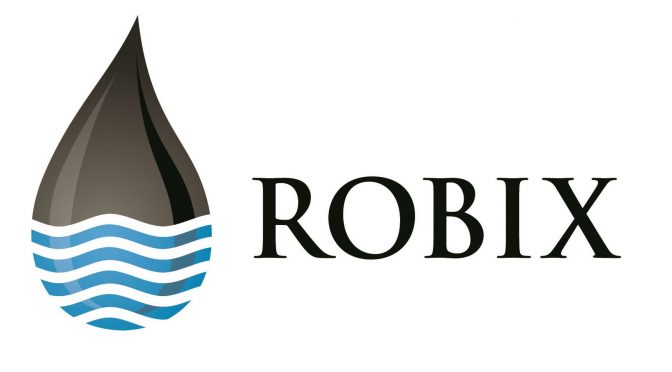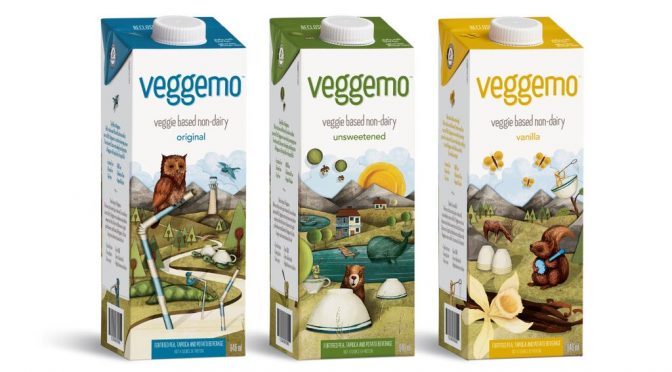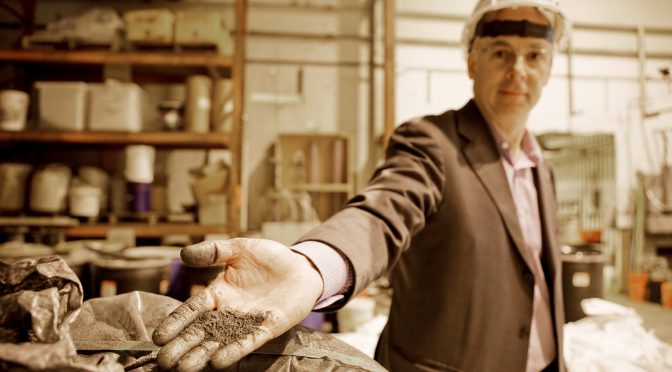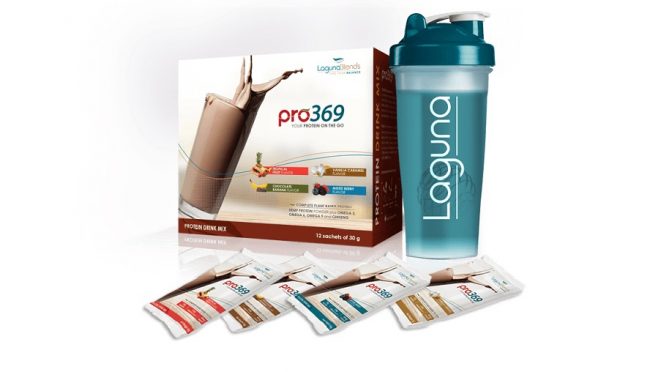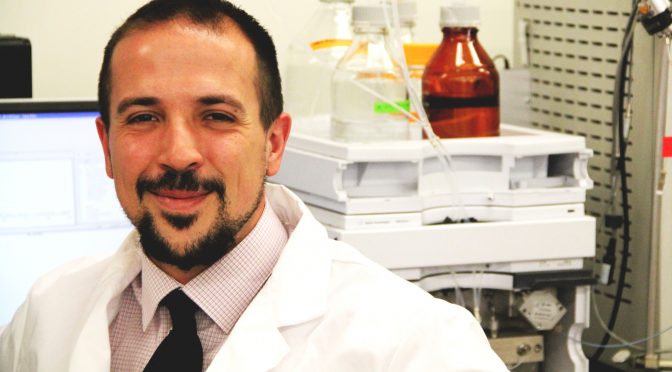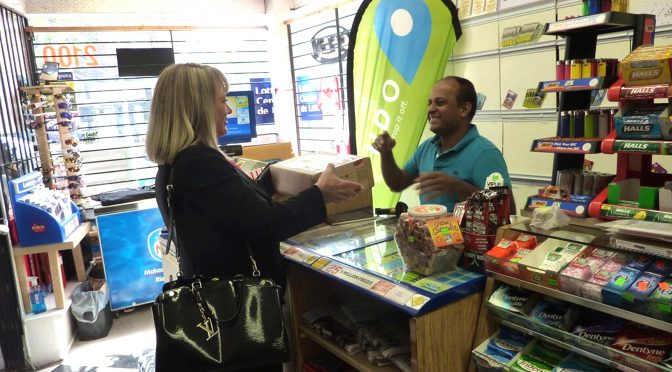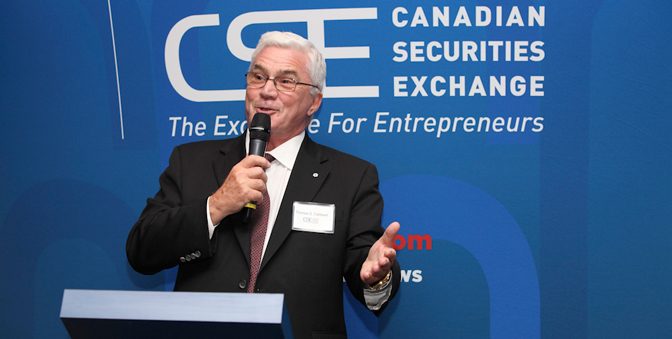This story was originally published at www.proactiveinvestors.com on March 31, 2016 and featured in The CSE Quarterly.
Robix Fuels (CSE:RZX) has under its sleeve what it says is a revolutionary oil spill clean-up technology, with a patent for a vessel that recovers oil off the surface of water mechanically. Known as the “COV”, or Clean Ocean Vessel, the apparatus promises a higher rate of recovery as well as a lower environmental footprint for oil spills in open waters, harbors and near shorelines.
After signing its first preliminary agreement to market the device last week, Robix is ready to build on its foundation and establish a portfolio of customers, taking the company to a new stage of growth.
The Alberta-based company’s CEO, Nathan Hansen, said the technology is based on simple “oleophilic” (oil friendly) principles of physics, as the ocean vessel contains two metal contra-rotating drums to which the oil clings, allowing for the material to be picked up off the surface of water. Scavenger blades then work to scrape the oil/water fluid off the drums into storage tanks so that the oil is safely contained in the vessel.
The contra rotating drums also cause a pumping action, which helps the oil to collect more effectively than by one rotating drum, explains Hansen.
The advantage of the stable, Catamaran-style barge vessel is that it can be used in virtually any rough sea conditions with waves as high as 8 feet, and that the recovery efficiency of the COV is in the 90 to 97 percent range, outperforming its competitors that cannot operate when waves exceed 18 inches. The special design of the company’s vessel gives the ability for the two drums to fit into the surface of the oil slick, says Robix.
The technology is also highly scalable, as it can be used in any size, from mini to large, depending on the size of the oil spill.
The company has already built its first COV, which is 40 feet long, 26 feet wide, and 12 feet deep from the surface of the deck to the bottom of the tanks.
Robix’s idea is to license its technology to either a potential customer such as an offshore oil producer, or a service contractor, to use the vessel “in case” with a quickly deployable plan in place. The license would provide the same comfort as insurance, in the sense that if an oil spill tragedy occurred, the COV would be on stand-by and ready to help.
“If there is a leak on a drilling platform in the open ocean, that’s where we come in,” says Hansen.
“A small spill at a gasoline station — that’s not really our strength. Ours is a big oil spill. It doesn’t happen that often, but when they do, it’s catastrophic,” he adds, referring to the $40 billion clean-up cost of the infamous BP oil spill in the Gulf of Mexico in 2010, which put oil companies under intense scrutiny, and on governments’ radar screens everywhere.
A market for the technology certainly exists. Some 2 billion metric tons of oil is shipped in oil tankers every year, and in U.S. waters alone, 1.3 million gallons have been spilled from vessels and pipelines.
Robix’s idea is taking off, with the company already in discussions with several potential customers.
The company just signed a letter of intent with a Mexico consortium to jointly market the vessel in Mexico, to be used for oil spill recovery and remediation in the country. Robix said efforts are now underway to ship the recently manufactured first COV to Mexico for reassembly and testing upon the execution of a definitive agreement.
The deal was signed with Grupo Macomax, a Mexican holding company that offers services to environmental emergencies in the country.
“Our vessel works to reduce the cost [of clean-up] so dramatically, and appeals to any entity operating in a region with ample shipping traffic and with production platforms with a higher risk,” the chief executive affirms.
Hansen is confident that the technology has widespread appeal nowadays, citing the example of a mandate implemented in the Mediterranean to have all risk mitigated through stand-by equipment, a result of the BP oil spill that occurred almost five years ago.
The typical method used to clean up oil spills now consists of surfactants and dispersants, which drive the oil directly to the bottom of the ocean, and only defer the problem, whereas oil is contained in the COV safely.
Indeed, Hansen says that environmentalists have put pressure on governments to supply “best-in-class, mechanical solutions” for protocol measures, which he anticipates will be a huge benefit in terms of attaining customers. Specifically, Robix has advanced, developing economies high on its radar screen as opposed to already developed markets.
Currently, the company is in the early stages of crafting its business plan and working out its guidance, which it expects it will be able to release after it completes its first deal. Its lucrative business model is such that as soon as it has a licensee with a revenue stream, it will immediately begin generating positive cash flow.
For example, a customer would pay an upfront license fee, which would be quite similar to the capex required to build the unit, as well as monthly stand-by fees based on how many units the client would like to place.
“The margins on profit are very high. Aside from building the unit, the only costs would be training on how to use the apparatus,” says Hansen.
Marketing plans are being implemented now, with Robix recently raising $1.1 million in an equity round, with the intent of going back to markets to raise more funds soon. Any funds raised so far have gone directly toward the cost of building the first unit, which was approximately $2 million.
“We are required to design another size unit, probably a 10 footer, [which will likely be] in conjunction with the first license,” the CEO explains, adding that this new unit could well be funded by a provincial grant from the Canadian government.
The COV, the patent for which forms the basis on which the company was founded, is just the beginning for Robix, as it looks for more intellectual property acquisitions, all focused on oil-water separation technology.
The chief executive says such technology would be in demand in the Western Canadian Sedimentary Basin, where many oil fields in the northern parts of B.C. and Alberta have severe water issues when drawing the oil up.
“[These companies are] basically producing water with oil that comes with it. There is a need for new technology for the industry to continue to have economic viability.”
He adds that there is also an acute need worldwide for purifying water, another possible use for its oil water separation IP. Whatever the scenario, the COV patent is the first in a series of patents, with Robix currently in various negotiations to tack on more to its portfolio.
In the meantime, Robix is working on further applications for its Clean Ocean Vessel, opening up its existing technology to new markets and buyers.
The basic parts of the COV can also be used for oil sands tailings ponds, another big environmental concern for both governments and the oil and gas industry as a steady stream of oil slick is created by the tailings process. The device would turn the otherwise toxic oil sands waste into more oil to sell, which otherwise would be lost revenue.
“Our R&D team is working on this right now,” says Hansen, referring to the combination of other technologies with Robix’s two contra-rotating drums to make the idea more economically efficient.
Learn more about Robix Fuels at http://www.robixfuels.com/ and on the CSE website at http://thecse.com/en/listings/cleantech/robix-environmental-technologies-inc

